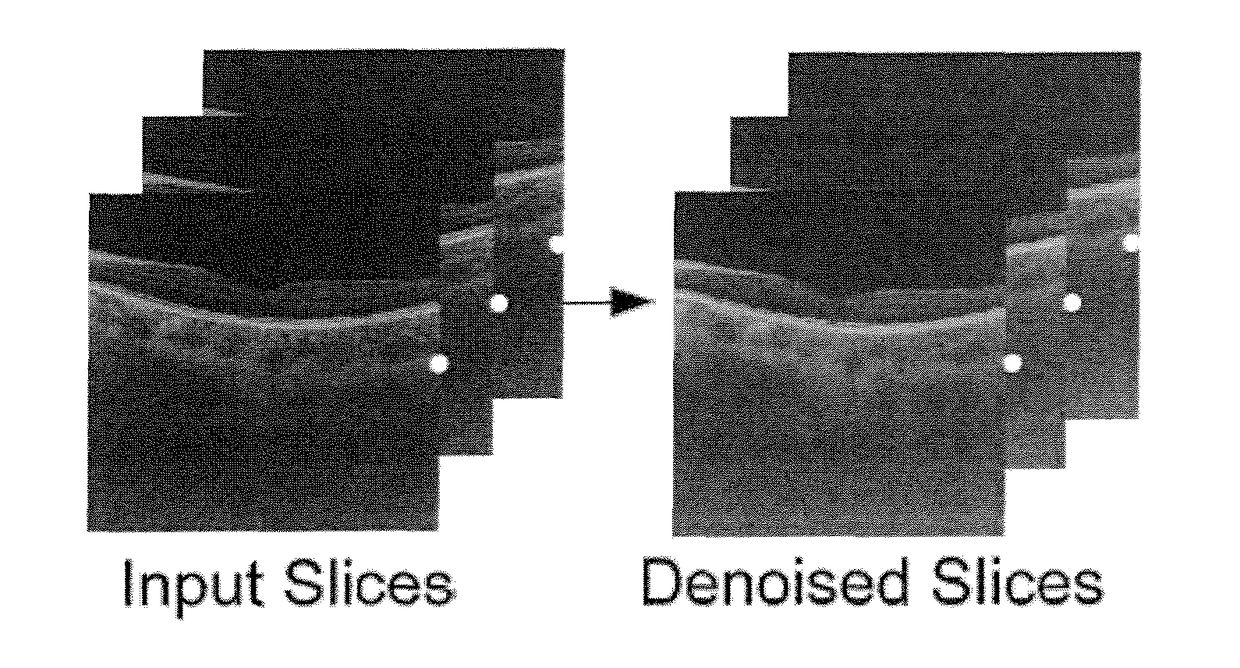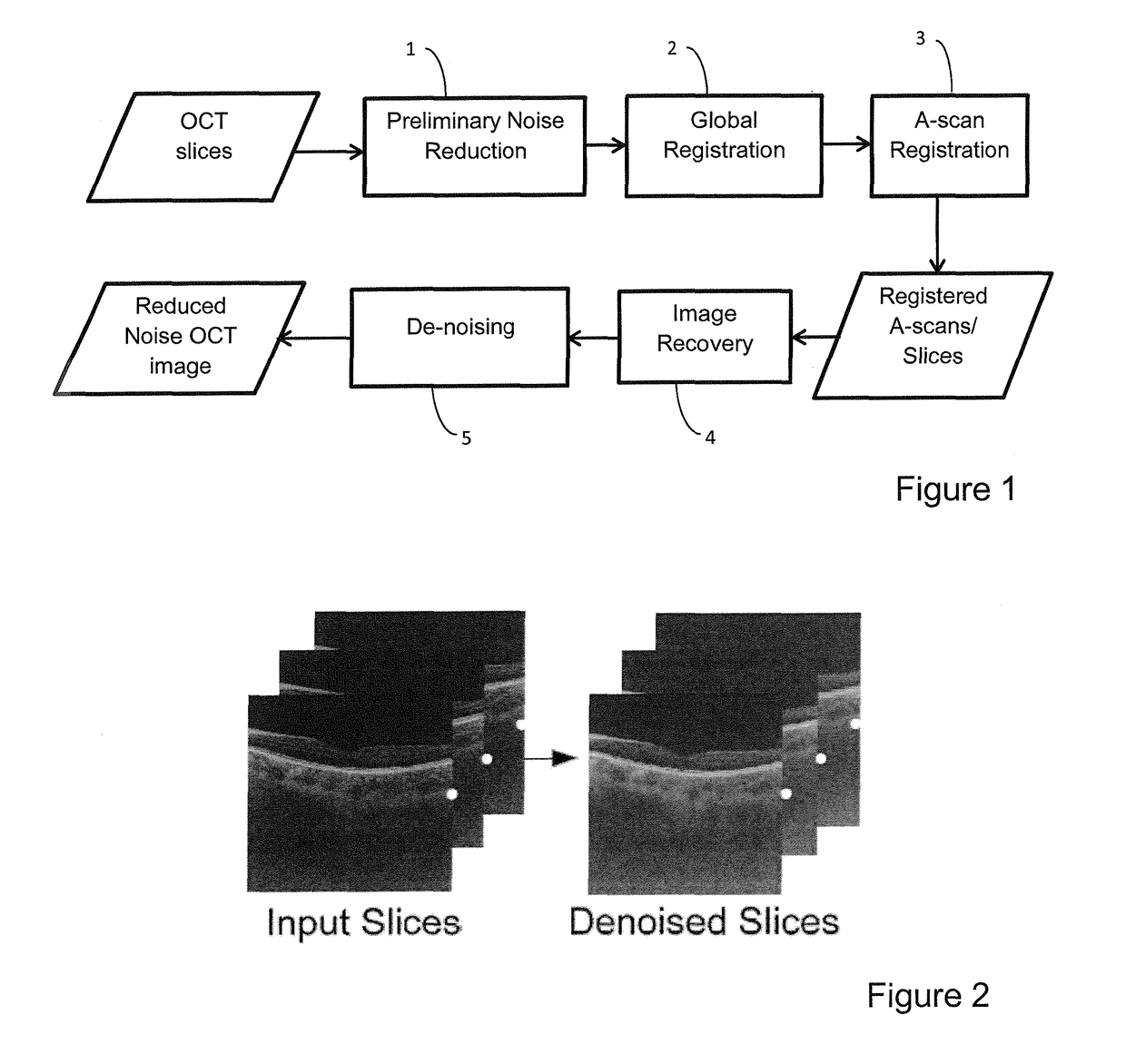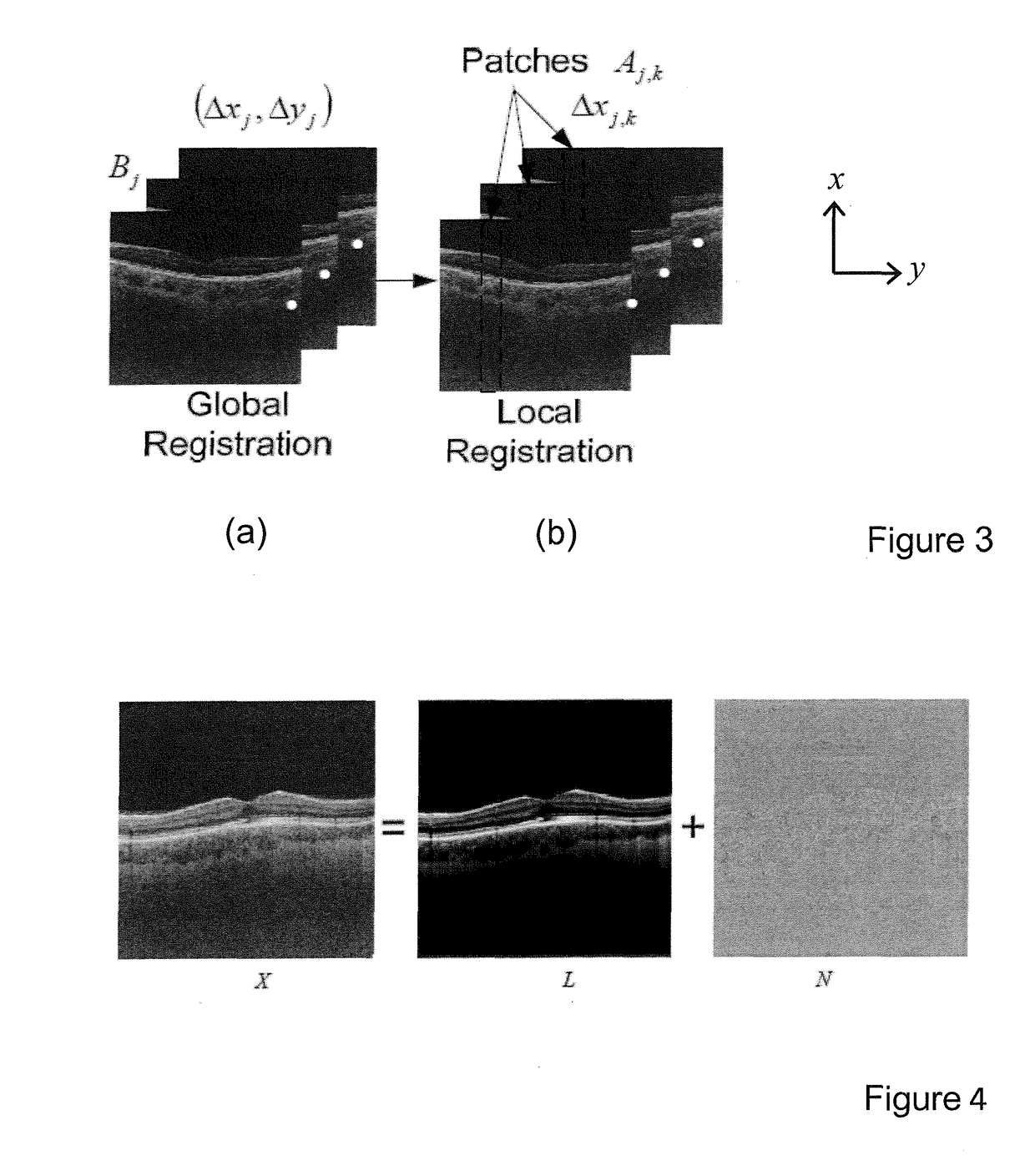Reducing speckle noise in optical coherence tomography images
a technology of optical coherence and optical coherence tomography, applied in image enhancement, instruments, eye diagnostics, etc., can solve the problem of theoretically impossible matrix completion, and achieve the effect of reducing speckle noise, reducing speckle noise, and useful in noise reduction
- Summary
- Abstract
- Description
- Claims
- Application Information
AI Technical Summary
Benefits of technology
Problems solved by technology
Method used
Image
Examples
Embodiment Construction
[0027]FIG. 1 is a flow chart illustrating a method of processing optical coherence tomography (OCT) data according to an embodiment of the present invention. The method may be performed by a computer system such as a standard generally programmed computer, having a data storage device storing program instructions to implement the method steps.
[0028]The input to the method is OCT data comprising a plurality of OCT slices. A requirement to use matrix completion is to obtain multiple slices for each scan. This is easy for line scan mode as each slice is scanned 96 times. For other modes such as 5 line-cross mode, 3D vertical and 3D horizontal mode, the scan from the neighbouring slice can be used as the neighbouring slices have strong similarity.
[0029]For example, in 5 lines cross mode, we use all the horizontal / vertical scans (5×32=160) for a horizontal / vertical slice. For 3D scans, we can use all 256 scans. Although many of these scans are obtained from different locations, many of t...
PUM
 Login to View More
Login to View More Abstract
Description
Claims
Application Information
 Login to View More
Login to View More - R&D
- Intellectual Property
- Life Sciences
- Materials
- Tech Scout
- Unparalleled Data Quality
- Higher Quality Content
- 60% Fewer Hallucinations
Browse by: Latest US Patents, China's latest patents, Technical Efficacy Thesaurus, Application Domain, Technology Topic, Popular Technical Reports.
© 2025 PatSnap. All rights reserved.Legal|Privacy policy|Modern Slavery Act Transparency Statement|Sitemap|About US| Contact US: help@patsnap.com



